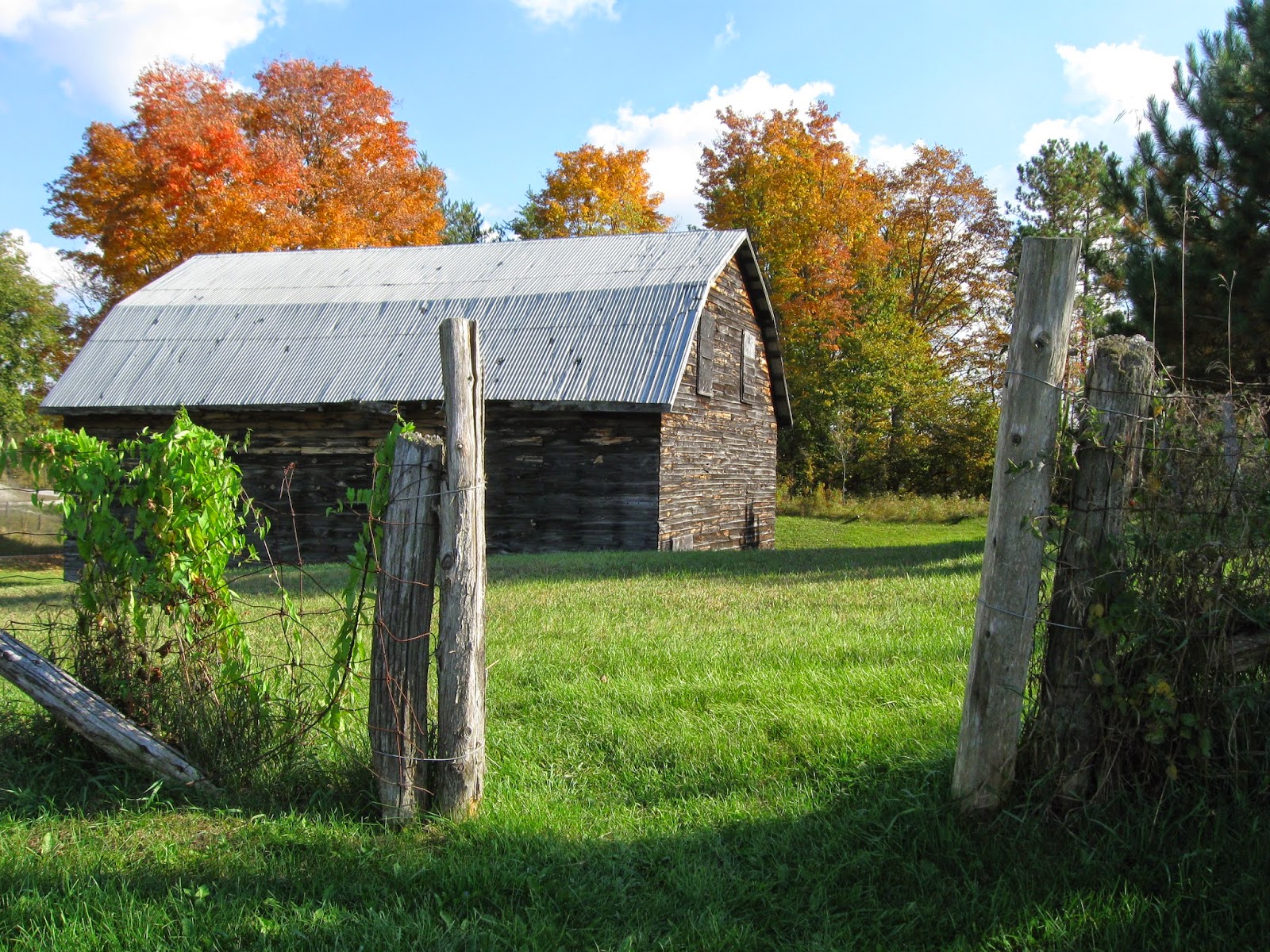 I enjoyed a photo trip around Snow Road on a sunny day last fall.
I enjoyed a photo trip around Snow Road on a sunny day last fall.I expect they get their fair share of jokes about snow.
Indeed, they no doubt get their fair share of snow, being in the most northerly part of Frontenac County.

But in the buttery fall light, I fell in love with the place - it's beautiful and picturesque in a rugged sort of way. There are lots of elevation changes, a nice turn and swoop in the curve through the village. Houses and outbuildings snuggle up against cozy wooded hills, and in the countryside about, a few small-scale farms, some with log buildings, still survive. A gracefully ageing log barn, and an impressive stone house distinguish the village.
The natural terrain can in no way diminish the more dramatic effect of the man-made landscape - a yawning gravel pit creeping perilously close to the back yard of the 1885 Presbyterian church. Prayer intention?

There's a nice feeling of community in Snow Road, of enterprise and make-do, judging from the adaptive reuse of the old school (and of its sign!) and the enduring presence of the greying John Thomson Hall. Just 4 years ago that family-owned hall rang with the sound of an internationally known bluegrass band, the Abrams Brothers, in a benefit concert for a local charity.
Here's the Frontenac News coverage of that standing room only event.
The place is officially called Snow Road Station, one of a string of towns linked by the Kingston and Pembroke Railway. There was a Mississippi Station south of the river of the same name, perhaps named after a homesick American lumber baron?
Community identity which was created here from the mid 1800's, at great cost, was eroded through township amalgamation and the inevitable centralization of services into larger centres by the late 1900's.
Community identity which was created here from the mid 1800's, at great cost, was eroded through township amalgamation and the inevitable centralization of services into larger centres by the late 1900's.
From the township history County of a Thousand Lakes (1973) I learned that Snow Road was named for the surveyor who found a way through marsh, hill and rockland, to lead the stalwart lumbering workers north.
The railway brought William Richards to Snow Road Station in 1883. From the Mississippi River he had stone quarried to build this three storey "castle", and lived in relative grandeur among his log and plank peers.



No comments:
Post a Comment